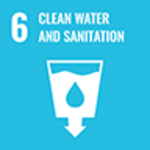
Professor Yoshihiko Matsui
Affiliation: Graduate Faculty of Engineering (Environmental Engineering Course School of Engineering)
Specialized fields: Water environment engineering, water treatment engineering, water quality control
Research keywords: water purification, advanced treatment, activated carbon, membrane separation
Alma mater: Kushiro Konan High School (Hokkaido)
Final academic background: Graduate School of Engineering, Hokkaido University
HP address:http://www.eng.hokudai.ac.jp/labo/risk/
*This article was originally published in the 4th issue of "Frontiers of Knowledge" and has been re-edited for the web.
Research Goals: Innovation in Water Treatment Technology

Photo 1 Atomized activated carbon
The main source of tap water is river water. Since it is not suitable for drinking as it is, tap water is manufactured through water treatment. With current technology, it is possible to obtain drinking water from raw water or seawater of any poor quality. However, since people use 200 to 300 liters of tap water a day, it is actually necessary to obtain safe and secure water through water treatment at a low cost of about 10 yen per 1m3 of water. On the one hand, water technology is attracting attention as the world's demand for water increases due to population growth and economic growth.
It is said that the method using activated carbon is effective for removing trace amounts of harmful organic substances, but it is still costly, so further efficiency improvement is required. Photo 1 is an electron micrograph of activated carbon that has been atomized to a diameter of 1 micrometer or less, which is being researched and developed. When it is made so small, the particles are invisible to the naked eye, and when put in water, it looks like a liquid. We are developing highly efficient water treatment technology to remove harmful chemical substances in water by using this micro-particle activated carbon for the first time in the world.
Method of research



We are working on research from the high functionality of materials and equipment such as coagulants and adsorbents that form the basis of water treatment processes such as adsorption, coagulation, and oxidation, and multifaceted evaluation methods such as trial production, direct measurement and model estimation In addition, we are conducting batch experiments and water treatment experiments with a small lab-scale membrane filtration plant. Photo 2 is a machine used for pulverizing activated carbon, and photos 3 and 4 are a machine for particle size and elemental analysis of prototype pulverized coal. In addition, water quality analysis is important to determine how much toxic substances have been removed during water treatment. In our laboratory, we use a large number of instruments for our research, which are capable of estimating trace concentrations of up to 10-9 g/L and the structure of substances. Photo 5 is an orbitrap mass spectrometer that can estimate the concentration and elemental composition of substances, and photo 6 is a sniffing-gas chromatography mass spectrometer that detects odorous substances and estimates their chemical structures.


Photo 6 Sniffing-GC-MS
Advanced water purification technology developed by fine particles and separation membranes
Reducing the particle size of the material used for purification is expected to increase the reaction rate and improve efficiency. These fine particles are also removed together with turbidity in the water by filtering with a membrane with countless holes of 0.1 micrometers. At this time, it has been found that adding fine particles of activated carbon prevents the separation membrane from becoming dirty, suppresses the decrease in water permeability, and contributes to the reduction of energy required for purification. It has been found that not only can harmful substances be removed quickly by making them finer, but more harmful substances can be removed. This technology has been adopted by many new water purification plants to be constructed in Yokohama, Sasebo, Omuta, and other cities, and its application is expanding. I am very happy that my research results are being returned to society, and it encourages my research.
Future development
In addition to the above research, we are also conducting research on human health risk assessment and management. I would like to continue to do my best so that the results of my research will be applied to the revision of the national drinking water quality standards and the planning and design of new water purification plants, and that they will be useful to people. Furthermore, I would like to present various solutions to other countries facing more serious water problems.



















